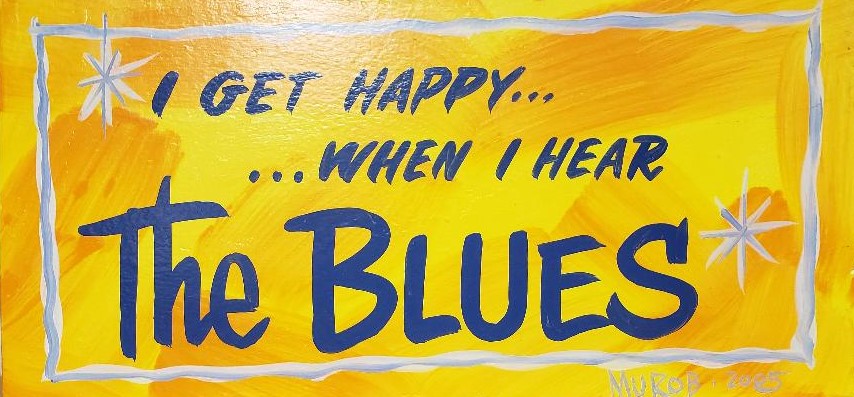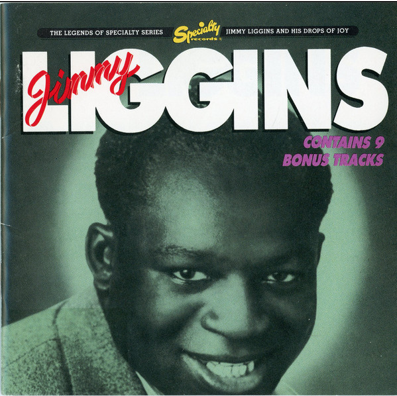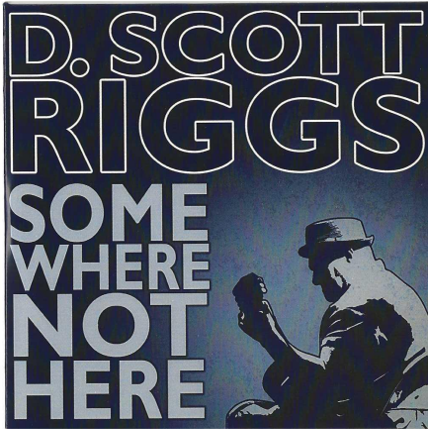

Curt's Blues - Blues. Only. Spoken. Here.
Keepin’ The Blues Alive And Thriving!
TELL ALL YOUR BLUES LOVING FRIENDS ABOUT CURT’S BLUES BLOG!
Artist Profile
Cootie Stark – Rambling South Carolina Bluesman Of The Streets
Yet again this week, inspiration for my blues artist profile came easily while I was greatly enjoying the superb CD by Cootie Stark entitled Raw Sugar (Music Maker Recordings MMCD 30). I hadn’t pulled this collection from my CD rack in quite some time, and now that I have again been wholly entertained by Stark’s blues offerings, it seems the appropriate time to provide a brief outline of his life and music career.
The blues artist who came to be known as Cootie Stark came into the world as Johnny (some researchers suggest “Johnnie”) Miller in late December, 1927 in Abbeville, South Carolina, the county seat of Abbeville County, a region in the northwestern portion of the state. His parents were sharecropping folks, and at some point early in his life the family moved to a home in Anderson County, which is located just north of Abbeville County, an area that combined with a total of 11 counties is known as “The Upstate.”
An important fact in the life of Stark is that he was born partially blind.
Of course, the Carolina region of the U.S. was once rife with the blues guitar style known as “The Carolina Piedmont Blues,” a form of the music blues based upon an established Black blues variety that grew within the Piedmont regions of Virginia, Georgia, and both South and North Carolina. For clarity, the greater Piedmont region is a plateau area that is located between the Blue Ridge Mountains and the Atlantic Plain from central Alabama in the south all the way to New York in the north. The guitar style is founded upon string picking methods that developed from the banjo, an instrument which firstly came from the area of West Africa.
The Piedmont style of guitar is one that is distinguished by a fingerpicking method whereby a consistent, fluctuating bass rhythmic design deployed by use of the thumb serves as the foundation for an accented melody that is generally made by picking with the index finger.
Research is quite vague on Stark’s early developmental years, though it is reasonable to conclude that he was exposed to the great blues being made all around him, as the region was filled with superb blues guitar practitioners.
What is generally accepted is that at the age of 14 Stark was bestowed a guitar by his father, and he quickly developed into a more-than-capable musician, and was known to have quickly been playing on street corners for money.
While still a teen, Stark made the decision to leave his family’s home and move to Greenville, South Carolina. With his eyesight continuing to deteriorate, Stark found great difficulty in finding and keeping traditional day work. As a result, he turned to a familiar course and began playing music on the streets, both obviously increasing his time performing for audiences and perfecting his skill sets, but also making contact with and learning certain playing nuances and expanding his catalogue of songs from a grouping of fellow blues artists including fellow South Carolinian blues guitarist and singer Pink Anderson, blues and ragtime guitar player Walter Phelps, Piedmont guitar stylist Baby Tate, and blues guitarist, singer, actor, civil rights advocate, and songwriter Josh White, among others. It can be proffered that Baby Tate played the major role in the younger Stark’s musical development.
It was also during these early days in Greenville that Stark acquired the nickname of “Sugar Man.” It should also be pointed out at this point that Stark acquired his performing name “Cootie Stark” as a result of combining a nickname from his early years with that of the surname of his grandfather.
Stark continued to play his blues, primarily on the streets, all across South Carolina, including Columbia, but also in Asheville and Greensboro, North Carolina, as well as in other southern U.S. cities. And unfortunately, by his early thirties, his eyesight was so significantly diminished that he was declared legally blind. Still living in Greenville, South Carolina, Stark was able to boost the meager living he was earning on the streets by performing at a variety of hometown opportunities he had, including those found at private residences, square dances, restaurants, and yes, on the street corners. During this period, Stark was known to also use another performing name, Blind Johnny Miller, as well.
Many years later as the 1980s rolled around, Stark had pretty much given up music, and was somewhat despondent that the first generation of Piedmont blues practitioners were all but gone. Still living in Greenville in relative obscurity, without ever having made a record, Stark nonetheless held tight to his hope that one day his musical skills would bring him greater rewards.
A fateful encounter in 1997 with Tim Duffy, the Music Maker Relief Foundation’s creator, would change Stark’s blues career for the better. Duffy had happened upon Stark when he was performing, and was especially taken by a Fats Domino cover song he was playing on an electric guitar. So taken was Duffy that a conversation was struck, and he was very interested in Stark’s assertion that he came up through the old school and had a repertoire of thousands of songs from all his years of performing at his disposal.
The Music Maker Relief Foundation is a non-profit organization that assists musicians in being able to attain their daily subsistence needs, promotes them, and provides recording opportunities via their label. Duffy and Music Maker saw to it that Stark’s needs were addressed, while also releasing his first recorded collection entitled Sugar Man in in 1999, along with his second release for the label, 2003’s Raw Sugar, a collection where roots musician Taj Mahal accompanied him.
Stark’s debut 1999 collection offered performing opportunities for him, with Music Make arranging the outings for him. As Stark developed a wider audience for his work, and after his second release, he traveled to and performed, often with Taj Mahal, at venues he at one time could probably only dream about, including all across the U.S. (including nightspots and other places in Upstate South Carolina) and in Europe. Also in the U.S., Stark played prestigious sites such as Lincoln Center in New York, various large blues festivals, plus he journeyed in South America to play with Taj Mahal in Costa Rica.
Stark’s style of blues obviously was deeply indebted to the Piedmont style of guitar, as he could pick with the best of them. But he, too, also carried the more raggedy forms of blues playing and singing he witnessed from his earliest influencers, and those gleaned from seeing and hearing so many others on the thousands of miles he traveled as a street musician.
Starks could bellow as a vocalist, though he sang with a pleasing earnestness and confidence.
In April, 2005, Stark was bestowed the Jean Laney Harris Folk Heritage Award, a one-time, annual honor bestowed by the South Carolina General Assembly to practitioners and supporters of traditional arts deemed important to areas throughout the state.
Stark passed away in in mid-April, 2005 at the age of 77.
For those interested in Starks’s work, below are recordings that should be of interest.
- Sugar Man – Music Maker Recordings (MMCD8)
- Raw Sugar – Music Maker Recordings (MMCD 30)
- Various Artists – Music Makers with Taj Mahal – Music Maker (MMCD49)
- Various Artists – Winston Blues Revival – Music Maker Recordings (PROMM1)
Essential Blues Recording
Kid Ramos – A Magnificent Manuscript Of A Personal Spiritual Journey
Kid Ramos – Strange Things Happening – Nola Blue Records NBR|039
Multi-genre singer and guitarist Sister Rosetta Tharpe, an American musical legend, found widespread acclaim because of her gospel, blues, rock-n-roll, and R&B frameworks. In one of her signature “good book” songs, “Strange Things Happening Everyday,” she sings, “Jesus is the holy light / Turning darkness into light / There are strange things happening everyday.” Tharpe is also attributed with the following quote, “I’ve got Jesus in my heart. I’m glad to be alive.” Such an emotional transport is ultimately borne from missteps in life that eventually are necessarily and honestly considered, and finally reconciled toward a new beginning, one forward looking to redemption.
My dear friend, the great blues harmonica artist and vocalist Tom Moore, and I often speak about music. When conjoining our musical reflections with what’s going on in the current blues and related genre fields, often we find ourselves in time warps as we mutually agree that certain music made years ago, in many ways, eclipses what we currently hear, either in performance or on record.
From Moore’s perspective, he was an inescapable presence on the fertile San Diego, California blues scene of the early 1980s, someone who was particularly enmeshed in the music scene playing out at Solana Beach’s Belly Up Tavern, and through his integral involvement with the band The Five Careless Lovers, a group of some renown.
To this day, Moore often speaks in the highest of regards when framing his conversations regarding the energized performances of The James Harman Band at the Belly Up Tavern, likening them to the pillar of blues and jump blues musicmaking from an amazingly talented ensemble including James Harman with his sly wit infusing his keen songwriting, swaggering vocals, and astounding harmonica playing, the brick-solid low-end foundational rumblings of bass man Willie J. Campbell, the always-tight and idyllic percussion efforts of Stephen Hodges, and the duel guitar threat of the legendary Hollywood Fats and the pompadoured, muscle-bound handsome lad known as Kid Ramos. Moore, to this day, cites shows by this aggregation as the stuff of legends.
And the band’s brilliance is easy to hear on releases such as Those Dangerous Gentlemens, Thank you Baby, Extra Napkins (Strictly The Blues…Vol. 1), and Strictly Live In ’85…Plus! Vol. 1, but especially so via the “live” setting on the last collection mentioned.
The high level of interplay between Hollywood Fats and Kid Ramos is terrifying precise on the Strictly Live In ’85…Plus! Vol. 1 outing, akin to a duo who hungrily fed off of one another, two blues principals who had an unnatural telepathic musical bond, each ideally supporting the other, with the respect obvious and authentic.
Fast forward out of those early Southern California years and David “Kid” Ramos has built a tremendous musical career spanning some 40 years on the back of his work with Harman, Roomful Of Blues, Big Rhythm Combo, The Fabulous Thunderbirds, The Mannish Boys, Los Fabulocos, The 44s, and The Proven Ones, while too backing innumerable other blues artists, also constructing a renowned solo career and releasing celebrated collections of his own on Black Top Records, Evidence, Delta Groove Music, and Rip Cat Records.
But most importantly, Ramos has been an extremely devoted husband, father, and loyal friend to many.
But like anyone who reaches 65 years of age, contemplation is natural, and given that Ramos also successfully fought Ewing’s Sarcoma, looking at the big picture of life would be even more of a given, let alone other trials and tribulations that have impacted his life.
And that meditation on the totality of a life to-date, inspired by a telephone call from an acquaintance who heads his own his of worship, has resulted in Strange Things Happening, in what is clearly Ramos’ creation of clarity on the meanings of many of life’s mysteries, it’s opportunistic meetings with others, and the benefits arising from those crossings of paths, all based in his love of God and the saving powers of His love.
Quite simply, Strange Things Happening is one of the best works I have been fortunate to have enjoyed and found deep meaning within in many years. This is a major work of substantive depth, quality, and direction, and one of great celebration of the titanic power of salvation.
It may seem like housekeeping, but these summations are not meant in that manner. Surrounding Ramos’ dynamic and prolific vocal, guitar, and bajo (think of a cross between a 12-string guitar and cello – an instrument often found in Mexican music) proficiencies are Brian Templeton with his superb vocals and harmonica attributes, the aforementioned Stephen Hodges lending considerable percussion specialties, Mike Turturro perfectly framing the low-end bass work, Takazo Hall and Kaizo Hall presenting grand trumpet support, Jesse Cuevas delivering tasty accordion runs, David Limina distributing supreme keyboard nuances, and Ramos’ son Johnny Ramos stunning with his vocal output on four selections. All aboard this ambitious, thoughtful spiritual excursion glorify Ramos’ musical visions.
And by the way, Johnny Ramos’ voice is so incredibly pure and poignant. Stirring.
Ramos’ songs speak to the designed courses of life’s personal entwinements, the search for meaning and humbly asking for forgiveness, building upon a future framework for a spiritual life, how God is always by one’s side through the Lord Jesus Christ, the ever-lurking darkness of Satan, how love is “the answer,” and how his journey toward living a devout life is one taken day-by-day. Ramos’ songs have meaning, real meaning to him, and that comes across crystal clear, without any distortion.
So, how does a collection framed in faith appeal to the average blues fan? It is a legitimate question. First, Ramos’ guitar work throughout this sterling collection is of the expected high standard pinnacle that his fans have enjoyed whenever he has plied his six-string trade. Here, it is as robust and messaging as ever. Second, his vocals are steeped in depth of purpose, especially important in an outing dedicated to spreading “The Word,” and they impeccably convey his devout fidelity. Third, Ramos’ carefully curated backing collaborators are too drenched in the profundity of the moving aspects of music of emotional depth. Fourth, as gospel and the blues have always had a direct link, with Ramos’ fervent determination across the panorama of this collection bringing the earnest feelings of the two genres together superlatively hitting that mark. Finally, Ramos has lived, and is living, of what he speaks to here.
This is a document of rescue, humility, forgiveness, love, and hope. All from Ramos’ personal inputs. He knows best, has shared, and hopes for new heights of individual sanctified achievements.
Rarely, and I mean rarely, have modern-day releases been assigned to my “Essential…” category. That list is stocked with works whose contributions to the larger fabric of the music, across all the years, make them indispensable. Off the top of my head, contemporary works by Anthony Big A Sherrod and The Dig 3 come to mind as those whose quality merits necessary inclusion into my “Essential” recording category.
With Strange Things Happening, the greatest merits of the artist, the works themselves, the messages within the works, and the professionalism of the contributions from all involved make this a modern-day classic. And it belongs in every blues and gospel collection, period.
Ramos is an American musical treasure. A sincere “thank you” goes out to him for baring his soul to all of us.
This exemplary CD, Ramos’ first in five years, will have preorders beginning 2/28.
An essential, terrific work, indeed!
Bravo, Kid!

Recommended Blues Recording
Jimmy Liggins And His Drops Of Joy - Jump Blues And R&B Master’s High-Energy Best
Jimmy Liggins And His Drops Of Joy – Jimmy Liggins And His Drops Of Joy – Specialty Records SPCD 7005
This 25-cut 1990 CD collection from Specialty Records’ The Legends Of Specialty Series, with superb liner notes by singer, songwriter, and guitarist Billy Vera, is chock-full of Liggins’ timeless classics that were laid down for Art Rupe’s label during his extremely productive 1947-1954 period.
Mainstays of the Jimmy Liggins sound are found across the expanse of this completely satisfying compilation, including his astounding “Drunk,” “I Can’t Stop It,” and “Cadillac Boogie,” a 1948 selection that set the stage for Jackie Brenston And His Delta Cats’ famed classic “Rocket “88”,” a song released in early 1951 that is often heralded as the first rock-n-roll output.
This is jump blues and R&B at its finest, with Liggins and crew being the architects for later ground-breaking artists including none other than Elvis Presley, Little Richard, Chuck Berry, and Bill Haley.
Though never releasing a full album during his career, such was Liggins’ appeal that a second volume in this series exists. His offerings found regular rotation on Black radio outlets and, even after he left Specialty Records for the Mesner brothers’ Aladdin label, his brilliance continued to shine.
Highly recommended!

Short Take CD Reviews & Other Information
Short Take CD Reviews
Scott Riggs – Somewhere Not Here – Pure Panhandle Music #32507 – The Blues’ Healing Powers Embodied
To be released on 2/21, this 15-cut outing is an extremely moving testament to the power of music as it conveys the devastation of personal loss, the extreme resulting grief, and how an artist’s perseverance to move forward forced him to turn to his broad musical skill set to survive. Riggs’ story of abruptly losing his wife is one familiar to many, as are his wholly understandable stages of sorrow. Relying upon his music, Riggs lays bare his emotional load with only his mourning vocals, his resonator guitar, and his honest musical commentaries on how to deal with punishing pain, aloneness, remorse, and finally acquiescence. Simply, this is a man’s soul opened wide, and taking a peek inside and closely listening is an honor for the listener. Riggs’ openness in the face of unimaginable loss speaks to his yearning for understanding on many fronts, and this musical document is a brave and exposed tribute to the love of his life. Thank you, D. Scott, for sharing your deep, innermost thoughts. This is the power of the blues at its best.
A link to Riggs’ web page is directly below.

Upcoming Short Take CD Reviews
Labels, artists, and publicists, as we move into 2025, it’s a great idea to get your blues CDs mailed to me for reviews as early as possible as you bring new collections to the market! Remember, please, only blues CDs! I am looking forward to a great 2025 filled with exciting new releases!
Still in the office are a host of new CDs that will be receiving reviews in the next couple of weeks, including those by Frank Bey, Melon Jelly, and Matt “Rattlesnake” Lesch. I have been informed by artists and publicists that more are on the way, as well.
Blues Song Of The Week
“One Eyed Woman” – Buddy Scott And The Rib Tips Band – Inner City Trade Records label #ICT-70331 – Released in 1983
New Jasmine Records Releases
Jasmine Records has released new compilations, with the following no doubt being of particular interest to Curt’s Blues Blog readers:
- JASMCD3290 – Earl Gaines & Shy Guy Douglas – 24 Hours A Day
- JASMCD3309 – Various Artists – The Songs That Shaped The Yardbirds
M.C. Records Celebrates Black History Month (BHM) With Its Fifth Annual BHM Playlist
Kudos to M.C. Records as label head Mark Carpentieri reports the assemblage of its fifth annual BHM playlist, with selections from artists including Odetta, Guy Davis, Marie Knight, Big Jack Johnson, Sherman Holmes, Wild Child Butler, Robert Jr. Lockwood, Cyril Neville, Pinetop Perkins, Deborah Coleman, The Lee Boys, and Eric Bibb. Below is a link to the playlist. Great work, Mark!
2025 M.C. Records Black History Month Playlist – playlist by MCRecordsNY | Spotify
M.C. Records: American Roots Music Since 1991
Document Records’ Vital Work
Document Records’ mission since 1985 has been to unearth, repair, and re-release the complete recorded works of the majority of Black artists and their recordings from the 1890s to the mid-20th century. The label’s blues selections are presented in chronological order and include studious notes and comprehensive discographic info.
The Document Records online store is simply amazing, and a place where over a thousand collections of astounding past recordings are offered for purchase, either as CDs or as downloads. Document Records offers exciting bundles of recordings on certain artists that bring great value to collecting blues music.
Curt’s Blues Blog is a huge supporter of the important work that Document Records performs, and a great many of the label’s CDs reside in my personal collection.
Below is a link to the online Document Records store. No matter where you are in building your blues collection, you should definitely visit the Document Records online store. You will not be disappointed!
Document Records – Vintage Blues and Jazz
New Delmark Records And Alligator Records News And Offerings
Delmark News And Releases
- A new solo piano CD entitled Johnny Iguana: At Delmark – Chicago-Style Solo Piano will be released on April 11th. This will be a good one!
- Dave Specter will have a new collection released in the near future entitled Live At SPACE – With Brother John Kattke/Rodrigo Mantovani/Marty Binder. This no doubt will also be a quality outing!
- Check out all the new singles by various artists on the label’s web page
Alligator News And Releases
- Tommy Castro & The Painkillers saw a new release drop, entitled Closer To The Bone, on February 7, 2025. In addition to a CD release, the collection is also available on a blue vinyl LP.
- Southern Avenue’s debut label release is scheduled for 4/25/2025
- Also, watch for the announcement of a new artist coming to Alligator
It’s too bad that both Delmark Records and Alligator Records won’t provide this blues blogger with hard copy CDs of their upcoming releases for reviews. As I’ve explained to both these labels, I do not perform reviews via electronic sound files. I guess that 12,000+ blog readers aren’t enough for the labels to send hard copy CDs! Please, urge them to do so!
Please visit Delmark’s and Alligator’s web sites for information on all the goings on at the labels.
DELMARK RECORDS – Blues & Jazz since 1953
Living Blues Magazine – Latest Edition
The latest edition of Living Blues Magazine is out with features on Ronnie Baker Brooks, Gerald McClendon, and Harrell “Young Rell” Davenport, along with their Let It Roll series that focuses on The Famous Hokum Boys in New York City in April, 1930 for ARC Records, and of course, the publication’s broad recording review section and additional extensive features. This writer has been a Living Blues subscriber for 36+ years, and though I may not always agree with their record reviews or their journalistic direction, I can’t stress enough how vital this magazine is to the blues. Please consider a subscription if you don’t already have one and support the magazine’s fine work, and the blues in general.
A Reminder To Support “Live” Blues And Purchase A Blues Recording
Touring blues musicians endure an arduous life of traveling city-to-city, sometimes with the distance between shows being many miles. This equates to large outlays for gasoline, food, and lodging (if not often sleeping in vehicle while traveling), When these talented blues artists roll through your town, please consider parting with some of your hard-earned dollars to attend their shows.
Also, with so many online platforms offering blues recordings for sale (check out the Curt’s Blues Blog “Resources” page for many of them), please think about purchasing a new blues CD or MP3 recording for your collection. And often, artists sell their recordings at their shows.
CD Reviews
Once again, a reminder: If you want a CD reviewed, please contact me via the email address found on the Curt’s Blues Blog “Contact” page, and I will promptly answer with the mailing address to get the CD to me. I do not perform reviews via electronic sound files. Please don’t put your promotion company’s sticker over the record company information on the back of the CD jacket. Please be mindful that this is a blues blog, and that providing rock, pop, hip hop, or Americana CDs for review will not find them being considered. And please, don’t mail me CDs with postage due!
It is a goal of mine to have as many CD reviews as possible pass through the blog.
Thank you.
